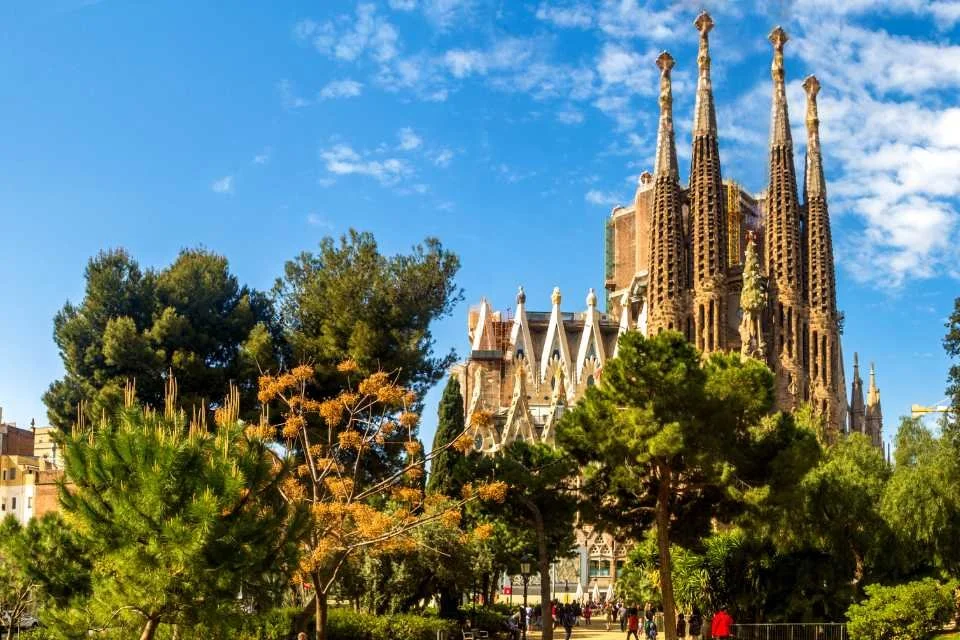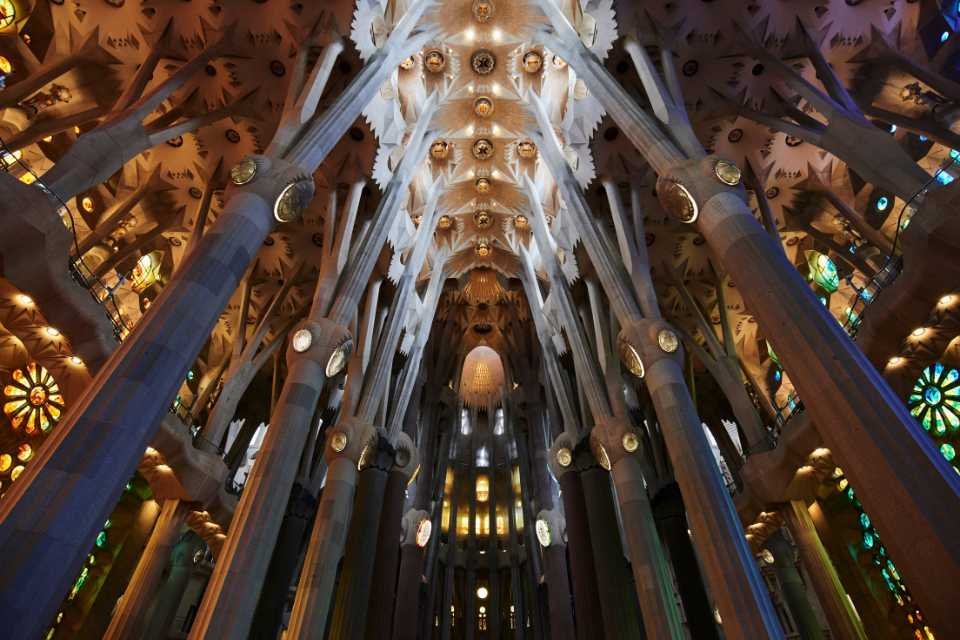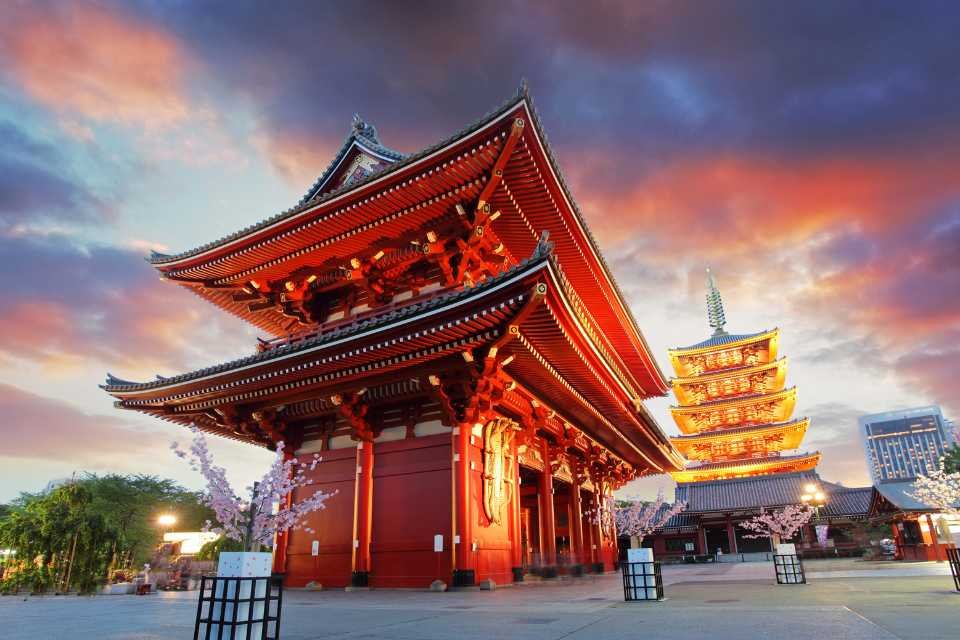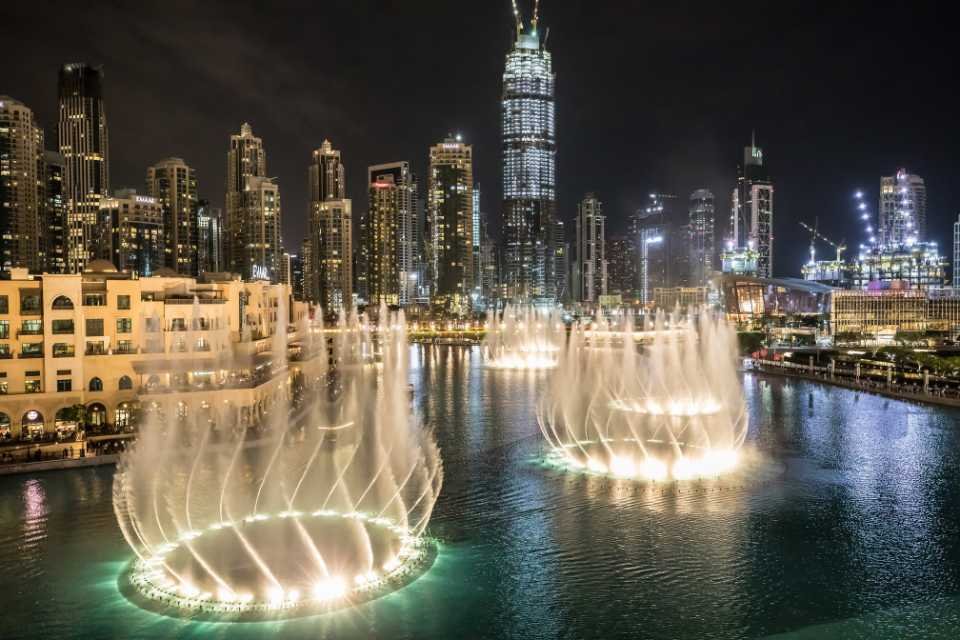The ultimate Sagrada Familia travel guide
Everything you need to know about Barcelona’s most famous landmark
There's a good reason the Sagrada Familia is always at the top of any list of things to do in Barcelona. Every facet of this stunning church, from the glistening stained glass windows to the colossal columns and arches, will leave you speechless. If you don't have a game plan, even the most impressive sites can be a bit much. The Sagrada Familia is a must-see attraction in Barcelona, and this guide will help you get the most out of your time there.
Locals consider the Expiatory Temple of the Holy Family to be Barcelona's most important landmark and a must-see attraction when visiting the Catalonian capital.
A humble Roman Catholic church dedicated to Jesus, Mary and Joseph, the church eventually became the most renowned example of Catalan Modernism.. It was made a basilica in 2010 by Pope Benedict XVI.
Gaud's basilica embodies the architect's belief that nature is a manifestation of God. When designing the basilica's columns, pinnacles, and stained glass windows, Gaud aimed to mix Christian symbolism and biblical allegory with organic, geometric shapes.
An architectural wonder that has been under construction for nearly 140 years has become one of Spain's most popular tourist attractions with 4.7 million visitors this year.
What is the Sagrada Familia?
The Sagrada Familia is an ‘expiatory temple’, which means it is designed to as a place to make atonement for transgressions against God or the Catholic Church's teachings.
How to get to Sagrada Familia
The Sagrada Familia is located in Barcelona’s Eixample district. It’s around a 40 minute walk from Barrio Gotico, but the basilica has it’s own metro station on lines 2 and 5 which are a short walk.
Barcelona’s Big Bus also stops outside Sagrada Familia.
Avoid jumping in a taxi near the basilica – you’ll be charged a high premium to go even a short distance.
Sagrada Familia history
It was only in 1883 that architect Antoni Gaudi got involved with construction of the Sagrada Famlia and was named director of the project in 1884. For the time being, Gaud left precise plans for its completion, even though he was aware he would not be present at the time of the building's completion. When Gaud died in 1926, only a fourth of the building was finished. The church's construction is still ongoing, and it's estimated that just around 70% of the final design has been completed. As a minor basilica, the church was proclaimed dedicated by Pope Benedict XVI in 2010.
Gaudi's Sagrada Familia is one of the most notable instances of his unique style, which incorporates aspects of Catalonian Modernism and Spanish Late Gothic style. Both in terms of symbolism and the usage of organic shapes and forms, nature plays a significant role in Gaud's design.
There are three facades to the church when it is completed: the Nativity Facade (dedicated to Jesus' birth), the Passion Facade (dedicated to Christ's crucifixion), and the Glory Facade (dedicated to Christ's glorification) (dedicated to the glory of Jesus).
The initial plans called for a total of 18 spires to represent the apostles, evangelists, Mary, and Jesus. When the edifice is finished, it will be the highest church in the world, with just eight spires constructed so far.
A gang of anarchists set fire to the temple during the Spanish Civil War (1936-1939), destroying a substantial portion of Gaud's studio.
Sagrada Familia facades
Aware that the construction of the Sagrada Familia would continue for decades or even centuries, Gaudi proposed to concentrate on the church's facade. He wanted to give a sense of completion to the generation that started the project and to inspire future generations to carry out what was started long before they were born.
Nativity Facade
As its name suggests, the Nativity façade depicts the birth of Jesus. The only facade that Gaud nearly finished while he was still alive is this one. Gaud viewed the facade as a sign of nativity and the beginning of life. Exuberant decoration, incorporating animals and tools intermingled with symbols such as the Tree of Life was introduced because of this.
Passion Facade
The Passion Facade began construction in 1954 and was finished in 1976, with the help of plans by Antoni Gaudi. After the primary construction was complete, the decorative work began.
This facade, aptly named ‘Passion Facade,’ was built to commemorate Christ's death on the cross. Gaudi wanted the facade to instil fear, which explains the gaunt expressions on certain figures’ faces and the abstract, shadowed image of the crucifixion.
Facade of Glory
One of the three facades that make up the basilica will be known as the Facade of Glory because it is the one that will lead to the basilica's main nave.
This facade honours Jesus' celestial splendour and symbolises his ascension to paradise. When Gaudi realised he wouldn't get to see the facade's progress in his lifetime, he made several designs exhibiting his general concepts and plans: depictions of death, final judgement, and glory, as well as hell for those who wander from God's path.
Sagrada Familia interior
Also, the Sagrada Familia's interior is heavily influenced by Gaudi's personal style and nature. With the goal of avoiding the usage of Gothic buttresses, the architect fashioned the columns into tree trunks.
There are five ships in the nave (nave flanked by double collateral sides) and three naves in the transept of the Sagrada Familia's ground plan, which includes an ambulatory. Seven chapels and two spiral staircases lead to choirs that round the apse, which can be accessed via the chapels.
Why is the Sagrada Familia still unfinished?
There are several reasons why the basilica has taken so long to complete, but one of the main reasons is the desire to stick as closely to Gaudi’s original plans and vision.
Complex geometric shapes that make up what will be the world's tallest church are much more difficult for architects and engineers to comprehend and bring to life than they were even a few years ago.
In addition, the Sagrada Famlia is a project that has always relied on individual donations, despite its international renown. During Spain's Civil War and the decades that followed, there were moments when there was no spare money available for construction. Barcelona’s tourism boom began only after the 1992 Olympic Games, when the city gained international popularity. This new wave of visitors and renewed financial successes in the city mean that more funds can be diverted to the project’s completion.
When will the Sagrada Familia be finished?
According to the current Stewards of construction, 2026 is the year when all construction will halt on the Sagrada Familia, but the Covid-19 pandemic and subsequent lack of tourists means the completion date may be pushed back even further.
Sagrada Familia tickets
It costs €26 for an individual admission to the basilica with an audio-guide app, which may be used in 16 languages. For an extra Euro, you can buy an individual ticket to take a 50-minute guided tour, which also allows you to explore the site on your own when the tour is over.
Buy your Sagrada Familia tickets in advance here.
Sagrada Familia guided tours
One of the best ways to get the most out of your trip to the Sagrada Familia is to book a guided tour with a local expert tour guide. This makes it much easier to gain additional insights and understand more about the stunning architecture both inside and out.
Sagrada Familia tips
How to avoid queues at Sagrada Familia
Tickets can be purchased online up to two months in advance in an effort to cut down on wait times. However, with the Barcelona GO Pass, you'll get fast-track entrance to the Sagrada Familia and Park Güell, as well as savings at other major attractions in Barcelona.
When is the best time to visit Sagrada Familia?
The basilica is busy every hour of every day, but you’ll be more interested in seeing the way light changes the look and feel of the Sagrada Familia. Visit early in the morning, in mid afternoon or close to sunset in winter to see how the stunning stained glass windows react to different types of sunlight.
Should you climb the towers?
Absolutely. The view from the top is stunning and you see right across the city from the central towers. Bear in mind you’ll need to book access in advance and remember that you may need to wait during busy periods.
What happens if tickets are sold out?
It’s still well worth visiting the Sagrada Familia even if you can’t go inside. Part of the basilica’s splendour are its towers and facades which can be enjoyed from the street outside, plus the small park next to the Sagrada Familia is perfect for those all important Instagram shots.
Other things to do around the Sagrada Familia
Gaudi Avenue
One of Barcelona's most iconic modernist buildings, L'Hospital de la Santa Creu i Sant Pau, is located at the end of Gaudi Avenue. It's a must-see, and it just so happens the pavements near it are lined with cute cafes and eateries.
Sant Pau Art Nouveau Site
The modernist Sant Pau Art Nouveau Site awaits at the end of Gaudi Avenue. Sant Pau is now a stunning tourist destination after more than five years of rehabilitation work. Additionally, the campus houses the headquarters of roughly nine international organisations that conduct research in a variety of sectors, including education and healthcare.
Passeig de Sant Joan
Sagrada Familia is just a short walk away from this lovely boulevard in the city's centre, making it a must-see for anybody visiting Barcelona. An architectural masterpiece by Josep Vilaseca and Casanovas, the Arc de Triomf, is the highlight of this gorgeous boutique-lined street.
The best hotels near Sagrada Familia
Hotel Barcelona 1882
Hotel Barcelona 1882 is located in Barcelona, about 450 yards from the Sagrada Familia, and features an outdoor pool and a gym. In addition to complimentary WiFi, the four-star hotel features air-conditioned rooms with private bathrooms.
NH Collection Barcelona Gran Hotel Calderón
NH Collection Barcelona Gran Hotel Calderón enjoys a prime location on Passeig de Gràcia, in the heart of Barcelona's business and cultural district. It offers a fitness centre and a free rooftop pool with panoramic city views that is open all year round.
ME Barcelona
The Sagrada Familia, the Palau de la Musica Catalan, and the Tivoli Theatre are all within a short distance of ME Barcelona.
Ocean Drive Barcelona
Situated in the heart of Barcelona's Eixample neighbourhood, Ocean Drive Barcelona offers air-conditioned rooms with satellite flat-screen TVs. This hotel features a seasonal outdoor pool and you’re a stone’s throw from Sagrada Familia.
Now that you know everything there is to know about the Sagrada Familia, it’s time to start booking! Head to our flight search tool to find the best flight deals or check out our holidays to find your perfect break.














